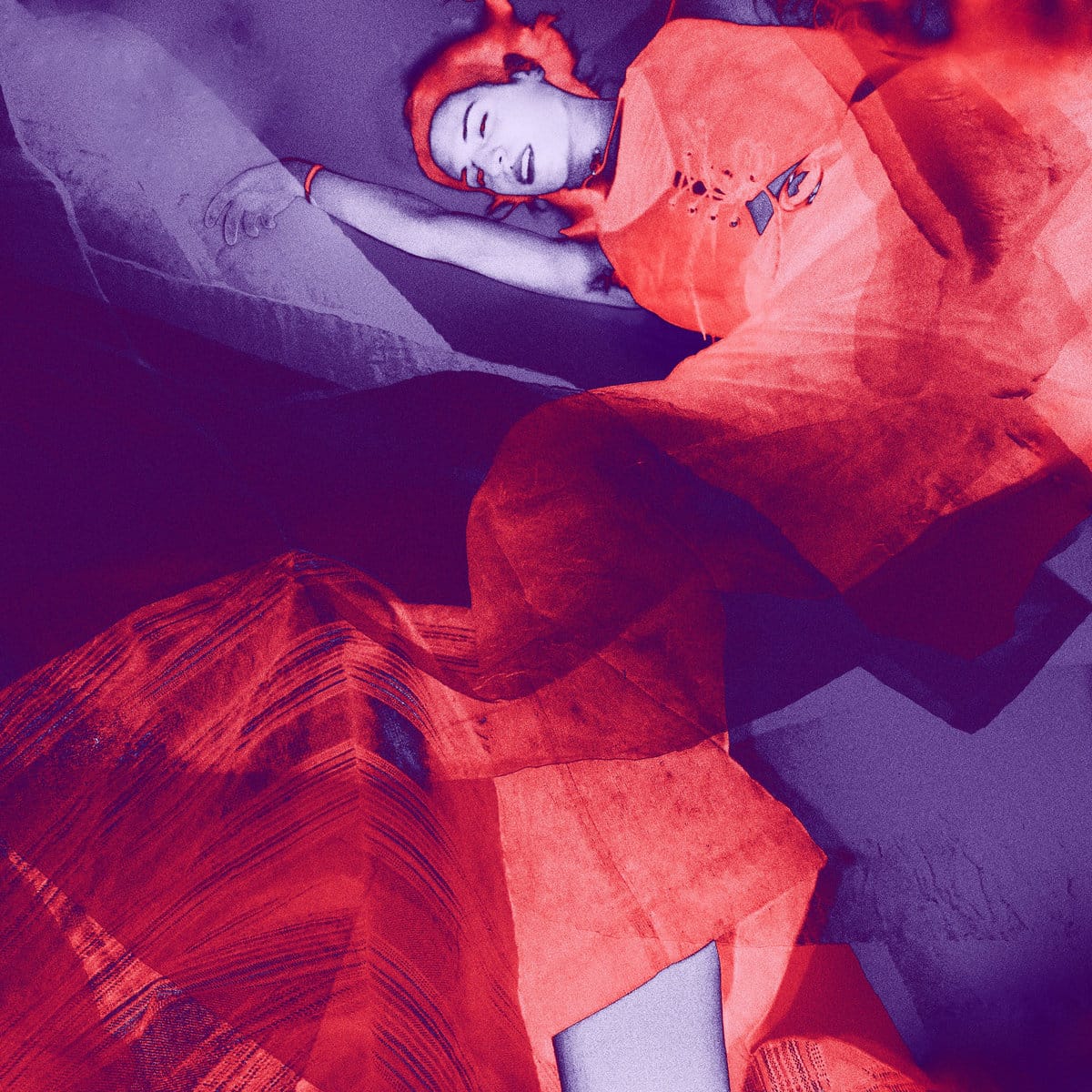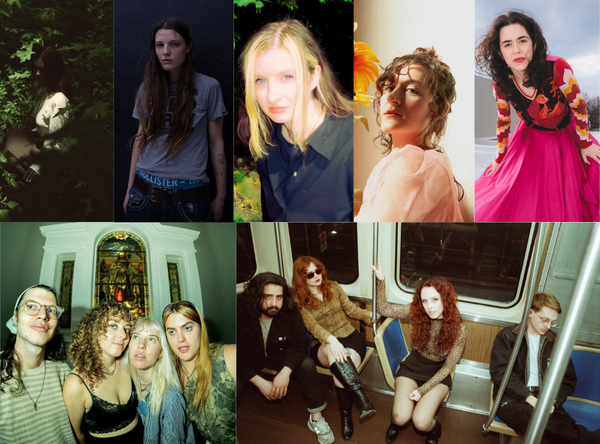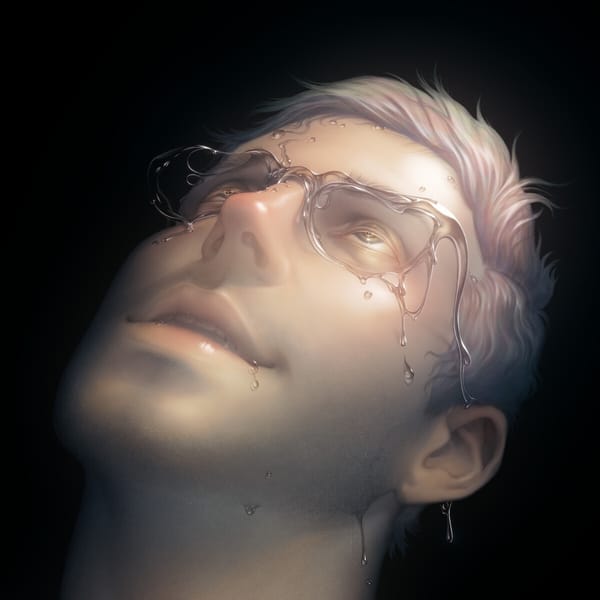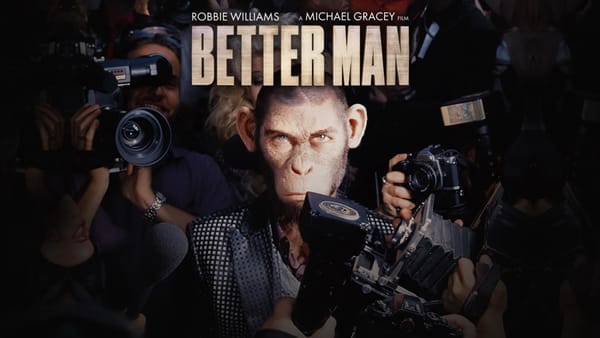Nothing Deep To Say #4: How Early Eyes Reinvented Themselves on Their Wild Comeback Single “Figure Drawing”

Formed at the University of Minneapolis, the band of vocalist Jake “Ren” Berglove, guitarist Josie Villano, and producer John O’Brien (rounded out by Megan Mahoney on bass, not present in this interview) have morphed several times since their initial music in 2017. Their earlier jazz-inflected music lead to a signing with legendary label Epitaph and work with slick pop producer Eric Palmquist (you may know his work on the infuriatingly catchy early-2010s Bad Suns hit “Cardiac Arrest”). For 2022’s Look Alive, the band stretched the limits of their sound, working with Jake Luppen of absurdly successful laid-back rockers Hippo Campus to incorporate glitches into “Revel Berry” and new wave on “Dying Plant.’
If that’s a bit of an infodump, it’s because “Figure Drawing”, the lead single from their upcoming record Destiny BxG, doesn’t sound like anything I just mentioned. I knew of Early Eyes because of their association with previous guest Pictoria Vark (also associated with Vark: basically every single interview subject I've had lately, particularly Tommy LeFroy and the Ophelias.) and I was not expecting a song equally inspired by D’n’B and midwest emo. Starting with a glitching guitar line, the song launches into breakbeats, auto-tuned vocals, and quotes from Persona 5. Ren wrote it about starting HRT, and the colorful music reflects the joy of finding your body – and your music – heading in the right direction. Incredibly enough, Ren and Josie are the first two transfemmes I’ve interviewed for this newsletter, and this is a perfect song to mark the occasion.
By the way, if you want to know why the album is called Destiny BxG, subscribe to the paid tier!
ON SELF-PRODUCING:
What did you learn from working with people like Eric Palmquist?
John O'Brien: When I finished making the last of the demos for Look Alive, I felt really confident that we could do it ourselves. At the time, I was glad we were working with Caleb. Especially by the end of that process watching them work doing most of the same things that I feel , I could understand everything they were doing, and by the end I was like, “we could have done that.” We couldn't have done it with as many nice microphones and plug-ins. But it was very inspiring for sure.
Ren: The whole time when we were working with Caleb Hinz and Jake Luppen on Look Alive, we all loved to learn. So we were just continuously asking questions and absorbing information and watching Caleb and Jake cook on the computer screen and just kind of taking all of that in.
And I would say by the time we were finishing recording the record, we were basically planning to self produce whatever we were going to put out next. And I remember talking to Caleb Wright specifically saying, “I think we want to self produce something.” And he said “I would love that. I think you should.”
And that was kind of valid, if I were to narrow it down to a single moment, that was the moment where I was, okay, we can do this. If Caleb, who took our demos and made a record out of it, says that we can do it, I think we can do it.
John O'Brien: We just all have different skill sets that can add up to one producer. We’re very good at delegating sound design. So a lot of the sound design, all the initial demoing process is Ren and Josie.
Figure Drawing sounds like a different band to anything you’ve done previously.
Ren: At that point in our lives [after we made “Look Alive!”]... it felt like no one was really supporting us on our journey towards developing as artists. It was just truly late stage capitalism, constantly releasing singles on Spotify. That was the move at the time. And once we got a second to settle down during the lockdowns, we had a huge tour get canceled, and we had lots of artists going through this huge life changing moment when everyone was inside their homes. We said “well, life’s short, we have a small support network as artists, and it’s time to really define the sort of thing we’d like to do.” Something we're proud of rather than chasing something that doesn't really feel us.
John O'Brien: I will say that “Figure Drawing” is probably the most left field out of the newer songs. I think there is a lot more apparent continuity on some of the other tracks. “Figure Drawing” was just the first one that was done and ready to be released, just because I feel the vision was so clear from the demo to tracking the stuff that we needed to track.
It's kind of a hot take for a single, but I think we're all extremely happy with it. We all put a lot of time into staring at our respective screens, trying to make it sound great.
THE ORIGINS:
Ren: In terms of writing the tune, we had come home from a tour with our friends Huhroon. And going on tour with them, I was inspired by the music they were making and we had recently kind of scrapped recording some songs. and I was like “these people are so great, and they're my friends, and I would want to make a song that I think would impress them", if that makes sense.
I remember making a demo, and we had a couple meetings at your [John]’s, apartment and we put better vocals on it. I tend to take a lot of shortcuts; particularly when I'm demoing a song, I'll just copy and paste a guitar riff or whatever, because I'm trying to get the idea out and then get it to get it to the team.
And then after that we sat on that mix for a long time, we went on tour a bunch, and then we got home, tracked some drums and guitars at Abe Anderson's studio. Josie and I met one more time and put some finishing touches on the vocals and some alternate ideas in, and then it was in John's hands for mixing.
John O'Brien: I did everything in kind of a stupid way where I took all the demo stems and did some production on the second chorus like the big 808 and the stretched out vocal, and everything that was done before we had done actual guitar bass and drum kit.
Ren: Josie is the true royal of redesigning all of the placeholder sounds that ended up sticking through to the end, redesigning the synths and re-recording guitars, putting a better sounding break in, because I had just chopped up a song from YouTube-to-mp3 or something.
Everyone I’ve interviewed is either Ableton or Logic, so which one are you?
John O'Brien: I use Ableton, but these two do not.
Ren: I use Logic.
Josie: I like Logic but I use FL Studio. (Hannah note: Holy shit.)
John O'Brien: We're all cross platform. it was all just bounced out wav files - any other stuff that I would program later in midi I did, but I think having just raw audio is really inspiring for me to work with versus MIDI because with MIDI, you're more looking at a piano roll and just general arrangement of notes. With raw audio, if you need to problem-solve you have to do it in a more involved way.
Ren: You can't just drop the Ableton file and the group chat and we all fuck with it with the same thing. But after we kind of finished the song, it helped me to realize that collaboration has almost become part of the entity of Early Eyes. Cause you're pulling from some stock FL studio plugins and stock logic, VSTs, various external hardware. It’s like three Limitless pills.
Have you heard the Jim Legxacy record from last year? That sounds like an influence.
Ren: It's funny that you bring that up because I remember when we were on a tour again, we had gone through a process of writing an album, scrapping it, having a bunch of demos or sketches, and scrapping them to get to where we are now.
And when we were in that process, I remember John played me "DJ" for the first time in the tour van, and I remember we both just had an extensive conversation about being inspired by the mixed fidelity of that Jim Legxacy record, and that shaped the writing process from there on out.
John O'Brien: Yeah, totally. It's something, especially in “Candy Rain” off that album that probably has the most just ‘pulling from a million different sources that are all, you know, not trying to compromise any singular audio source.’ And then if you just kind of showed that there's a way to handle that much discrepancy, but still make it sound it's all in one little universe.
I'm loving the drum and bass revival in general. I think "Figure Drawing" is very much hyperpop, a genre famously frequented by trans people.
Ren: Especially during the Look Alive era, we were all listening to that fucking Gecs record. And I think we weren't trying to bite anything that was going on from the 100 Gecs record as much as we were just “wow, you can make music that sounds that, and it can become a cultural entity, and not just the things you make on SoundCloud for fun”, that whole process of writing songs that are willing to take such a risk.
And willing to be so fun for lack of a better word in terms of making the process and how they come out. And I think that was another record to reference in terms of what inspired us to want to take this direction with the band.
John O'Brien: There’s a level of adventurousness to the early Gecs stuff. it was very inspiring, then we went through an era of that genre getting very hollowed out and a lot of the people who you know, when a lot of the defining artists who pioneered the sound either don't make music at all anymore or are not making hyperpop and stuff anymore.
Hearing “Figure Drawing '' reminded me of hearing Legxacy and Gecs for the first time, going “what is this and why is it working”?
John O'Brien: I think it comes down to the writing, I think that's one thing that we, more than anything, believe that you can't skimp out on and I mean that's all Ren and Josie. I'm not a writer for this band.
Ren: I have grown obsessive about what it means to build a song and what it means to establish a chorus or whatever, but in a different way than I thought about it before I have - there's two veins. Vein one is I'm really fascinated by accessing really specific emotions. So you're setting up a chorus or whatever, but a chorus that's gripping and captivating, isn't just one that sounds sad, maybe it's one that sounds longing. So accessing specificity and thing two in writing the tune, I love when songs support themselves. The goal of introducing a section is to tell its own story over the course of time and also provide support for the previous and the following section.
THE LYRICS:
Ren: I had just started hormone replacement therapy. It's gender affirming care and I was really loving it and kind of decided to write a song about HRT as if I were in love with it, if that makes sense. I've found most of the songs that we've prepped for the album we're working on right now, I've been finding it a lot easier to write about all of these global phenomena, all of these struggles that I think a lot of most people I know are struggling with at the moment, I found it easier to personify them. It just makes getting those feelings and those thoughts out easier. So the lyrics were really inspired by that.
I'm definitely taking a very different vocal posture and it's definitely coming from a different place in my gut, when I'm singing on that song. And I was really chasing the specific emotions that I was looking at. I was really chasing that feeling of starting taking the pills for the first time and that kind of manic yearning, that kind of excitement, but longing. And it was mostly tied to not necessarily wanting to be a future self or a future version of yourself, but more so just knowing that you're already on the way there.
That makes sense, there's “studying every single line of you.” So it's literally studying with yourself and going, “how is this changing me?”
Ren: And, “we can sneak a kiss in the bathroom”! I take my pills in my bathroom mirror every morning, and I think there's a layer of beauty to every time that I put the estradiol under my tongue. Every time you put it under your tongue, it feels like you're making an active decision of affirming yourself.
THE SONG STRUCTURE:
Ren: I knew when I was writing it that it needed to go somewhere, but it didn't want to go to the verse yet. So it became a post post chorus. I also love the idea. This is really common on Charli XCX records and some Remi Wolf songs, but just not necessarily caring about the common verse-chorus-bridge format of stories of old, but you just put hooks back to back to back and you have a song. I love that idea because that's why in figure drawing, there may be three verses, but none of them repeat melodically or entirely the same because I think I just believe in really, it's really fruitful to chase. Emotions and energy more than it is to limit myself in terms of “this is what a verse should be, right?:
John O'Brien: It's playing jenga, and you can have something that's normal and sturdy, but it's not that impressive. When you stack a bunch of parts together, you really run the risk of it sounding like some bullshit, and not making any sense, but if you get your tower higher and higher and it becomes this more impressive thing - we have a song with three verses that are all varying lengths a bridge that's less than halfway through the song, and a one and a half minute drum and bass outro. none of the verses or choruses are copy and pasted at all.
"THIS IS WHAT GIVES THE WORLD INFINITE POTENTIAL"
John O'Brien: They’re from Persona 5, when this little cat person is getting lifted up and transformed into... I don't know, some anime shit, but it's a good, good game. I didn't even know if it was gonna make the cut. I was not even thinking about its relationship to anything aside from just being a cartoonishly evocative phrase - I was this close to not doing it because it was a little bit too on the nose to have an inspirational anime quote over a drum break! It was definitely a [classic] genre moment. It is a very fitting line.
THE VOCALS:
John O’Brien: for the vocal in the second chorus, I stretched it out to 400 % length. So it's just a 10 minute vocal. And then I froze the track and squished it back [to normal size]. So there were just a ton of artifacts. If you're listening to a YouTube video, play it at half speed or something. That kind of thing is all over this song, and will be all over the rest of the upcoming record.
THE GUITARS:
John O'Brien: I recorded that just with my guitar straight into the interface. And then I put a real time bitrate reducer called Codec on it.
THE DRUM BREAK:
Ren: If I recall correctly, I think I dug up the break just from the drum break sample library from my computer.I don't really remember where I got it. I never intended to put a drum break in a song, especially a DnB drum break, but it just felt right. I had the chorus, I recorded little voice memos into my phone anytime a little melody or lyrics or a groove came into my head. And I had just pulled one of those out, and I was you know what? This is the one.
John O'Brien: It gets very difficult to say who exactly did what, because we all kind of did everything a little bit. The break, I think was initially chopped by Josie, but then the section for the last 30 seconds of the song with the more intense chops, I did.
And then a bunch of others, ,we were all up in each other's shit for, for this song. It really went back and forth a lot. I think the demo guitars were written by Ren, some of it was rerecorded by Josie, but then I got to Abe's earlier than everyone else. So I just tracked the final guitars. We use both.
What’s next?
Ren: Our rough tentative plan is to go on this upcoming tour. And tour it out and then come home and just make the rest of the album.
John O'Brien: It's almost entirely written, just some kinks to iron out and we got to track it all. And then write some more music! I feel we're in a period now of a lot of momentum. So which we have honestly not had for the last couple of years. It's been a lot of stopping and starting, but I feel now we're really focused. So we're just going to finish this one, write the next one.
John O'Brien: We really value the experience of getting, you know, getting out to LA and recording with Eric and everything. But it also showed us that this was not the way that we wanted to make records- it was not something that was going to work for us.
For sure. We're all, we're all some DIY kids at the end of the day. So it feels, it feels better to be like “we tracked this shit in Abe's garage,” we went from an expensive LA studio to that. And I had way more fun working on this stuff. So I think we've settled into where we are supposed to be.
Thank you for reading! Catch Early Eyes on tour and follow them at @EarlyEyesBand. If you liked this issue, feel free to give to my Ko-Fi or subscribe to the paid tier of this newsletter so I can keep doing this :)


